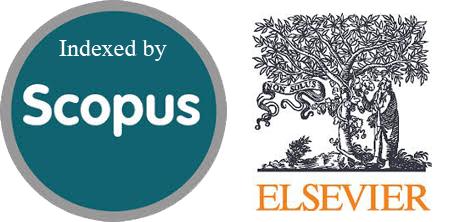Effect of Age on the Tympanometric Parameters
DOI:
https://doi.org/10.54133/ajms.v9i1.2190Keywords:
Age, Ear, Elderly, Middle ear, TympanometryAbstract
Background: As individuals become older, their middle ear may undergo physiological changes that cause variations in the tympanometric parameters. Objectives: To determine the effect of age on tympanometric parameters and to establish normative data for both young and elderly age groups. Methods: A cross-sectional study was carried out from October 2024 to March 2025 at the Clinical Otolaryngology and Audio-Vestibular Consultation Unit. Participants with normal otoscopic findings were classified into young and old age groups. Tympanometric assessments were performed using the Amplivox Otowave 102 device, measuring ear canal volume (ECV), tympanometric peak pressure (TPP), static acoustic admittance (Ytm), and tympanometric width (TW). Results: The study included 143 young individuals with a mean age of 25.32±3.92 years and 144 old people with a mean age of 76.84±8.90 years. The statistical analysis revealed that age affected ear canal volume, acoustic admittance, tympanometric peak pressure, and tympanometric width compared to the younger group. Those 85 years of age and older exhibited significantly greater ear canal volume and tympanometric width among the older age subgroups. Nevertheless, there were no significant differences between the left and right ears in any of the tympanometric data. Conclusions: The results demonstrated a notable age-related change in tympanometric parameters and provided credence to the use of age-specific normative data for accurate assessment.
Downloads
References
Wiley TL, Cruickshanks KJ, Nondahl DM, Tweed TS, Klein R, Klein BE. Tympanometric measures in older adults. J Am Acad Audiol. 1996;7(4):260-268. PMID: 8827920.
Silva AP, Blasca WQ, Lauris JR, Oliveira JR. Correlation between the characteristics of resonance and aging of the external ear. Codas. 2014;26(2):112-116. doi: 10.1590/2317- 1782/2014211in. DOI: https://doi.org/10.1590/2317-1782/2014211IN
Toker ÖG, Kuru E, Özbay B, Akbıyık AR, Aksakal Eİ, Bal N. Age effect on tympanometric evaluation results. Marmara Univ Res Info Syst. 2021;23(2):39-46.
Zhou L, Shen N, Feng M, Liu H, Duan M, Huang X. Study of age-related changes in middle ear transfer function. Comput Methods Biomech Biomed Engin. 2019;22(13):1093-1102. doi: 10.1080/10255842.2019.1632297. DOI: https://doi.org/10.1080/10255842.2019.1632297
Dobrev I, Dillinger D, Meier L, Veraguth D, Pfiffner F, Probst R, et al. Conductive hearing loss with age—a histologic and audiometric evaluation. J Clin Med. 2021;10(11):2341. doi: 10.3390/jcm10112341. DOI: https://doi.org/10.3390/jcm10112341
Biswas A, Dutta N. Wideband tympanometry. Ann Otol Neurotol. 2018 Sep;1(2):126-32. doi:10.1055/s-0038-1676876. DOI: https://doi.org/10.1055/s-0038-1676876
Bess FH, Humes LE, (Eds.), Audiology: The fundamentals, (4th ed.), Philadelphia: Lippincott Williams & Wilkins; 2008. p. 134.
Zakaria MN, Romli M, Mohamad WN, Awang MA, Wahab NA. The diagnostic value of tympanometric width in identifying middle ear disorders. Indian J Otol. 2020;26(3):186-190. doi: 10.4103/indianjotol.INDIANJOTOL_120_19. DOI: https://doi.org/10.4103/indianjotol.INDIANJOTOL_120_19
McCarthy PA, Alpiner JG. History of adult audiologic rehabilitation: understanding the past to shape the future. In: Montano JJ, Spitzer JB, editors. Adult Audiologic Rehabilitation. 3rd ed. San Diego: Plural Publishing; 2021. p. 3-23.
Warner ME, Zhang X, Guillemot J. Demographic ageing: an opportunity to rethink economy, society, and regions. Camb J Reg Econ Soc. 2024. doi: 10.1093/cjres/rsae031. DOI: https://doi.org/10.1093/cjres/rsae031
Iraqi Ministry of Health. Iraqi Annual Statistical Report. 2023.
Kramer S, Brown DK. Audiology: science to practice. 3rd ed. Plural Publishing; 2019. p. 218.
World Health Organization. Ageing and health [Internet]. 2025 [cited 2025 Jan 12]. Available from: https://www.who.int/news-room/fact-sheets/detail/ageing-and-health
Suh MJ, Lee J, Cho WH, Jin IK, Kong TH, Oh SH, et al. Improving accuracy and reliability of hearing tests: an exploration of international standards. J Audiol Otol. 2023;27(4):169. doi: 10.7874/jao.2023.00388. DOI: https://doi.org/10.7874/jao.2023.00388
AlSarhan H, Mohammed AA, Yaseen ET. Reliability of the otoscopic tympanic membrane findings in the diagnosis of middle ear effusion. J Pak Med Assoc. 2021;71.
Kim HY. Reevaluating the notion of 'within normal limits' in tympanometry: implications for alternobaric vertigo and more. J Otolaryngol ENT Res. 2024;16(2):41-42. doi: 10.15406/joentr.2024.16.00546. DOI: https://doi.org/10.15406/joentr.2024.16.00546
Shahnaz N, Davies D. Standard and multifrequency tympanometric norms for Caucasian and Chinese young adults. Ear Hear. 2006;27(1):75-90. doi: 10.1097/01.aud.0000194516.18632.d2. DOI: https://doi.org/10.1097/01.aud.0000194516.18632.d2
Shahnaz N, Feeney MP, Schairer KS. Wideband acoustic immittance normative data: ethnicity, gender, aging, and instrumentation. Ear Hear. 2013;34(1):27S-35S. doi: 10.1097/AUD.0b013e31829d5328. DOI: https://doi.org/10.1097/AUD.0b013e31829d5328
Stuart A, Engelhardt BM, Tomaszewski EK. Tympanometric interaural asymmetry in African-American school-aged children. Int J Pediatr Otorhinolaryngol. 2020;138:110259. doi:10.1016/j.ijporl.2020.110259. doi: 10.1016/j.ijporl.2020.110259. DOI: https://doi.org/10.1016/j.ijporl.2020.110259
Li X, Bu X, Driscoll C. Tympanometric norms for Chinese schoolchildren. Int J Audiol. 2006;45(1):55-59. doi:10.1080/14992020500258588. doi: 10.1080/14992020500258588. DOI: https://doi.org/10.1080/14992020500377881
Puttaraju S, Jagadish N. Analysis of type of tympanograms across different age groups in a tertiary care hospital: a retrospective study. Int J Otorhinolaryngol Head Neck Surg. 2018;4(2):512-516. doi: 10.18203/issn.2454-5929.ijohns20180716. DOI: https://doi.org/10.18203/issn.2454-5929.ijohns20180716
Nondahl DM, Cruickshanks KJ, Wiley TL, Tweed TS, Dalton DS. Sixteen-year change in acoustic-admittance measures among older adults: data from a population-based study. J Speech Lang Hear Res. 2013;56(6):1745-1750. doi: 10.1044/1092-4388(2013/12-0381. DOI: https://doi.org/10.1044/1092-4388(2013/12-0381)
Humes LE. Development and application of a reference-interval approach to tympanometric norms using US population data for ages 6–80+ years. Am J Audiol. 2023;32(4):908-29. doi: 10.1044/2023_AJA-23-00092. DOI: https://doi.org/10.1044/2023_AJA-23-00092
Stenklev NC, Vik O, Laukli E. The aging ear: an otomicroscopic and tympanometric study. Acta Otolaryngol. 2004;124(1):69-76. doi: 10.1080/00016480310002212. DOI: https://doi.org/10.1080/00016480310002212
Ünsal S, Yaman Ü, Gümüş NM, Kaya M, Temügan E, Gecin MV, et al. Evaluation of Eustachian tube function tests and immittance metric measurements in a geriatric group. Turk J Geriatr. 2016;19(2):1-5.
Manchaiah V, Durisala N, Marimuthu V. Tympanometric profiles for Chinese older adults. Audiol Res. 2017;7(2):190-194. doi:10.4081/audiores.2017.190. DOI: https://doi.org/10.4081/audiores.2017.190
Sinha SK, Neupane AK, Gururaj K. Effect of aging on tympanometric findings in Indian population. Ann Otol Neurotol. 2021;4(1):1-5. doi: 10.1055/s-0041-1731921. DOI: https://doi.org/10.1055/s-0041-1731921

Downloads
Published
How to Cite
Issue
Section
License
Copyright (c) 2025 Al-Rafidain Journal of Medical Sciences ( ISSN 2789-3219 )

This work is licensed under a Creative Commons Attribution-NonCommercial-ShareAlike 4.0 International License.
Published by Al-Rafidain University College. This is an open access journal issued under the CC BY-NC-SA 4.0 license (https://creativecommons.org/licenses/by-nc-sa/4.0/).











